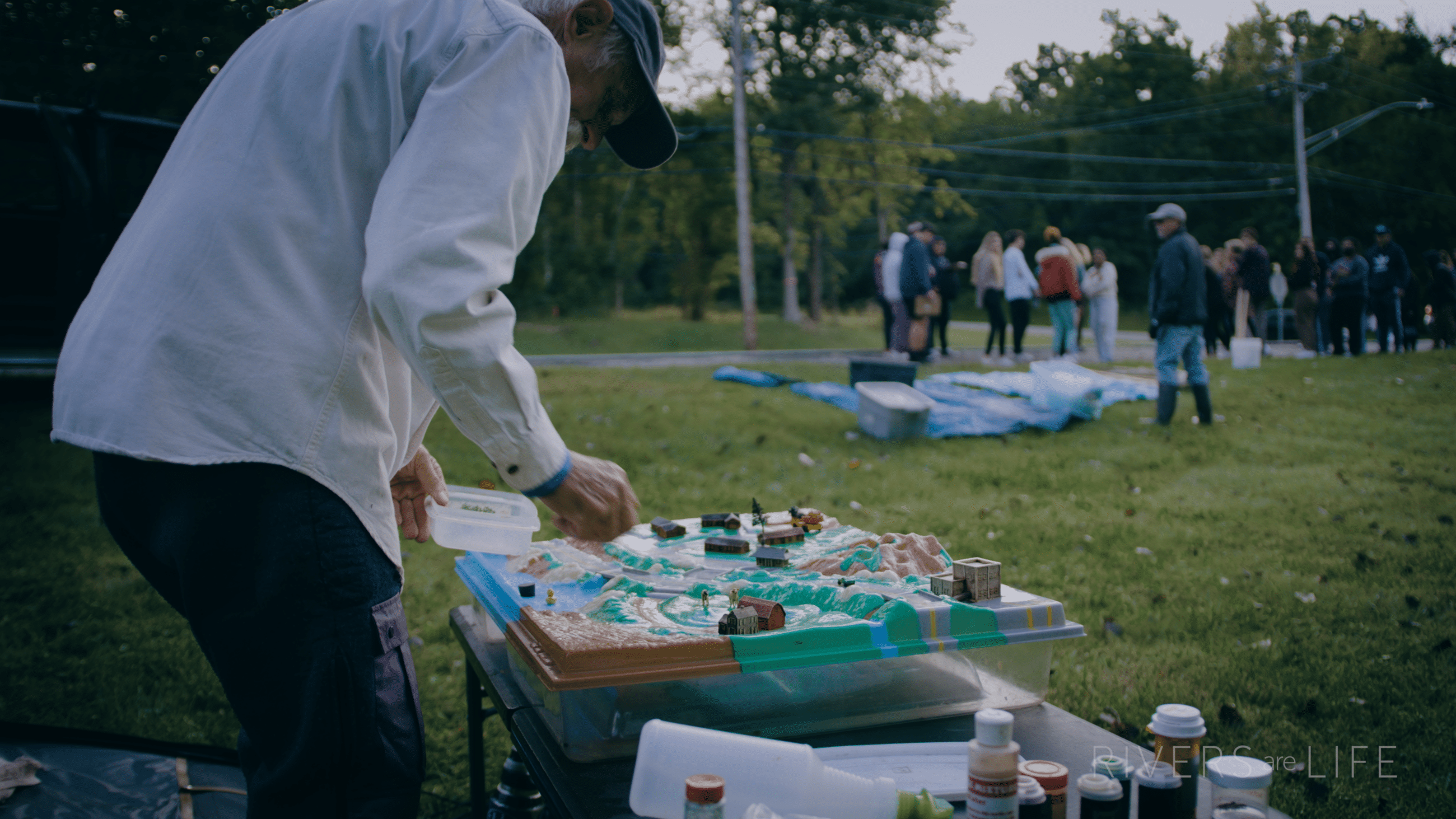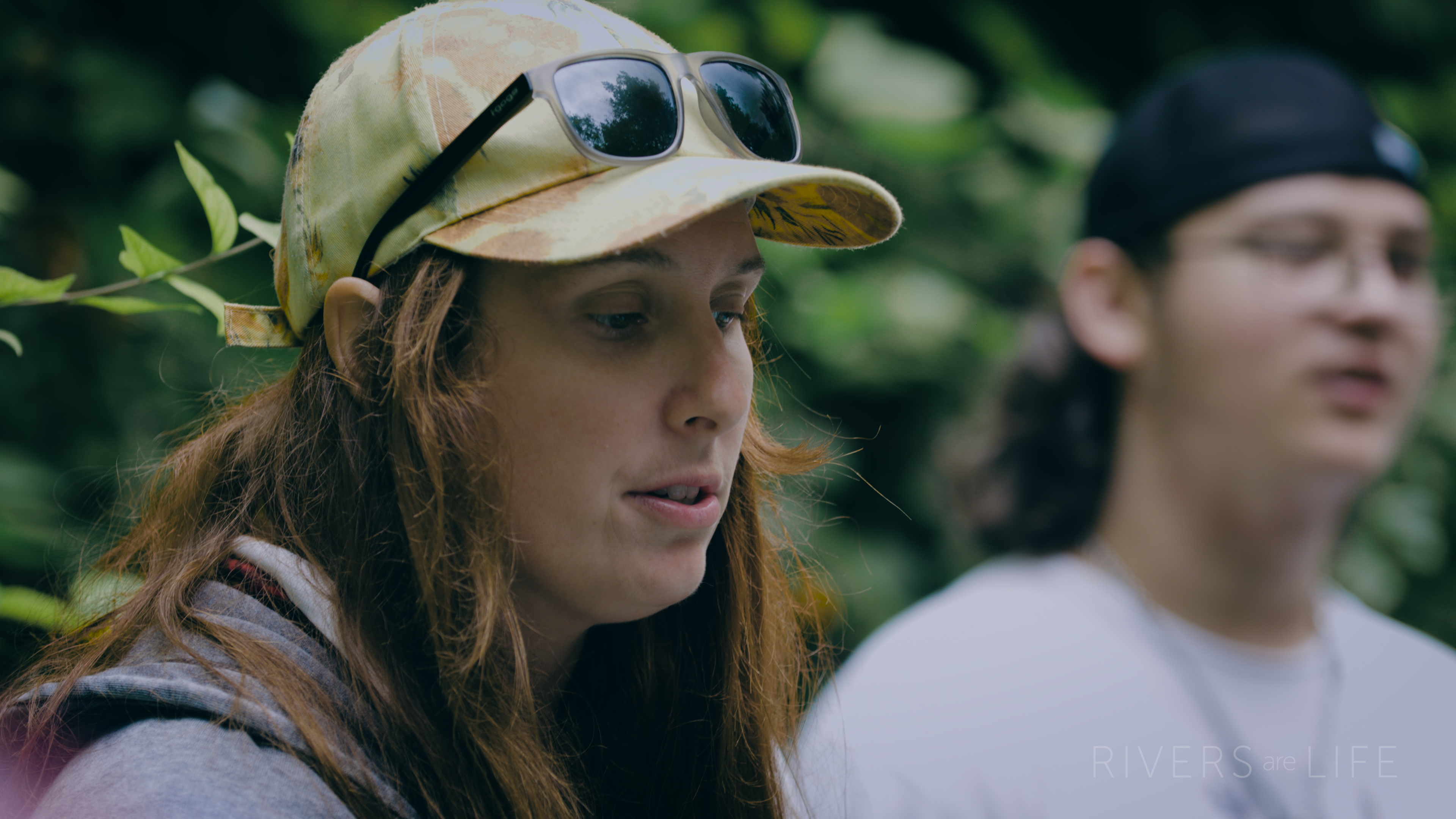"Chasing the Bono": Ecotourism Through Surf
RIVERS ARE LIFE
In the river-side village of Teluk Meranti, Indonesia, an immense wave roars through every full moon, flooding homes and waking locals. Down the Kampar River, Bono rushes from converging waterways to form one of the world’s longest and widest tidal bores.
The Bono is a record-breaking phenomenon that can run as long as an hour and four minutes and up to thirteen and a half miles. The wave breaks to flood the village and can fill entire houses if the tidal pulse is strong enough.
“Before Bono comes in, there’s complete silence,” says Dedy “Eddie” Endoni, Teluk Meranti resident and local surf guide. “But after the silence, the tsunami-like rumbling roar is overwhelming. The sound is like no other.”
As beautiful as it is terrifying, Bono provides an experience unlike any other found on earth. Surfing the vast wave has become both a local activity and a goal for surfers all over the world. The sport has changed the relationship between residents and the force of nature.
But the Kampar River carries even more than flood waters and surf opportunities. The river and the connecting peninsula are major resources for all the communities it runs along, and it must be protected as such. The indigenous residents use the area for farming, hunting, fishing, and even timber within its forested areas.
Fortunately, the uniqueness of the Bono may be the very thing that can preserve and maintain the Kampar ecosystem. The immense strength and length of the wave have caused Teluk Meranti to become a surfing hotspot. This attention has already had a positive impact on its people by bringing revenue from tourists to its local hotels, restaurants, and businesses. Continuing to share Bono with the world through community-based ecotourism could lead to greater funding for conservation of the Kampar River.
The Kampar and Bono
The Kampar River is more than 414km (250 miles) long. It starts from the Bukit Barisan mountain range, flows through the Riau province, and pours out in the Malacca Straits. During this course, the river divides itself into two branches: Kampar Kanan on the right, and Kampar Kiri on the left.
The branches become one again in the district of Pelalawan, where they are joined by several other rivers. Each high tide, waves from the sea flow into the downstream river current. This confluence, in addition to excessive rainfall and the shape of the river, causes the immense tidal bore known as Bono.
The villages that line the Kampar and the surrounding areas rely on the waterway. It’s their main source of transportation and economy. It’s not just a landmark, it’s a way of life.
Eddie is a conservationist on the Kampar River, which faces threats from plastic pollution. While some others make fun of him for even caring about litter, this doesn’t stop Endoni from increasing awareness of the problem by educating people on river health and litter management.
“I’m not a superhero,” he says. “I just try to do my part cleaning up one piece of trash at a time because we have to do something to preserve it for future generations.”
River Heroes Preserve Through Surf
Ruzi Hartono (Endoni’s best friend) is an accomplished surfer and a key promoter of Bono tourism, conservation, and surfing. Together, along with other locals, they have created the beginnings of ecotourism events for surfers to ride the wave.
The Bono offers a unique surfing experience unlike anything one can experience on the ocean. The efforts of these community-based ecotourism leaders have garnered attention from legendary surfers. Rizal and Varun Tanjun, father and son, are famous Indonesian surfers. Vaurn, now 19, has been surfing Bono since he was 11 years old.
“Even Bali surfers dream to one day surf the Bono,” says Varun Tandjung. “In Bono, we can ride from twenty to thirty miles if you don’t fall. It all depends on your skills.”
The surfing legends ride the wave alongside new generation surfers. Bono is wide enough to hold thirty people–a feat an ocean wave could never dream of.
Eddie guides traveling surfers on the water. His local knowledge is a major positive influence on their experience, and is one example of how community-based ecotourism can improve the lives of both their fellow locals and the ecosystem.
How Ecotourism can Help Preserve Kampar
Ecotourism is a method of travel to natural areas that focuses on conservation of the environment and well-being of the local people. Instead of visiting a place without considering or interacting with the people and organisms who live there, ecotourism puts these factors at the forefront of the journey.
One example of ecotourism in action is the “blue economy,” or the wealth generated from ocean-related activities that promote and support marine life. But when it comes to longevity and local participation, the most effective and sustainably-minded form of ecotourism is community-based ecotourism.
This strategy centers the benefit of the community and leverages tourism to greater manage the local natural resources. The goal is to use ecotourism as an economic tool to provide a sustainable livelihood for the locals, while generating funding and awareness for actionable conservation measures. In the case of the Kampar, ecotourism-focused businesses like Eddie’s surfing guide business and events on Bono could help fund cleanups for the river.
“The wave of the Bono, it changed the whole tourism here,” says Rizal. “It put this place (Teluk Meranti) on the map.”
Promoting this “smart tourism” through leadership from locals and control of environmental degradation can improve livelihoods and help the Kampar River thrive. It utilizes local knowledge to mindfully bring tourism to the area without disturbing natural resources and improve them instead.
Community-based ecotourism can also provide political and economic incentives for conservation. It can lead to growth within local markets and develop economic, environmental, technological, cultural, and social sustainability.
The Tandjungs are just a few of the many surfers who will travel to tackle Bono and tour Teluk Meranti. With Eddie and Hartono promoting the majesty of the wave, and young local surfers making it an integral part of their lives, the beauty of the Kampar will hopefully be conserved for generations to come.
You can watch “Chasing the Bono” here.
Share this
You May Also Like
These Related Stories

The Importance of Education for River Conservation
.jpg)
Urban Rivers: Rediscovering Hidden Gems in Cityscapes




.webp?width=908&height=661&name=Screen-Shot-2023-05-10-at-12%20(1).webp)


